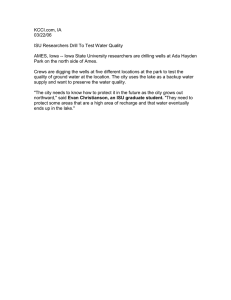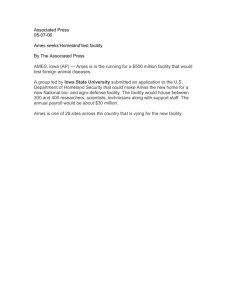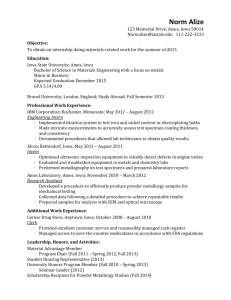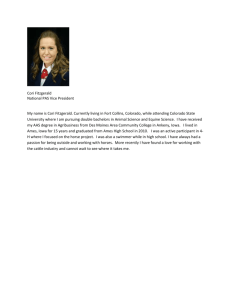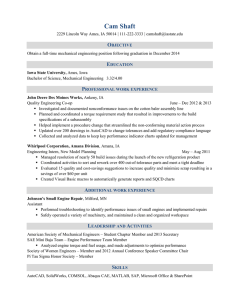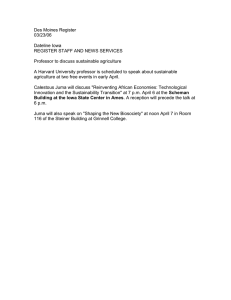Des Moines Register 03-27-06 Trains, trolleys could make a comeback
advertisement
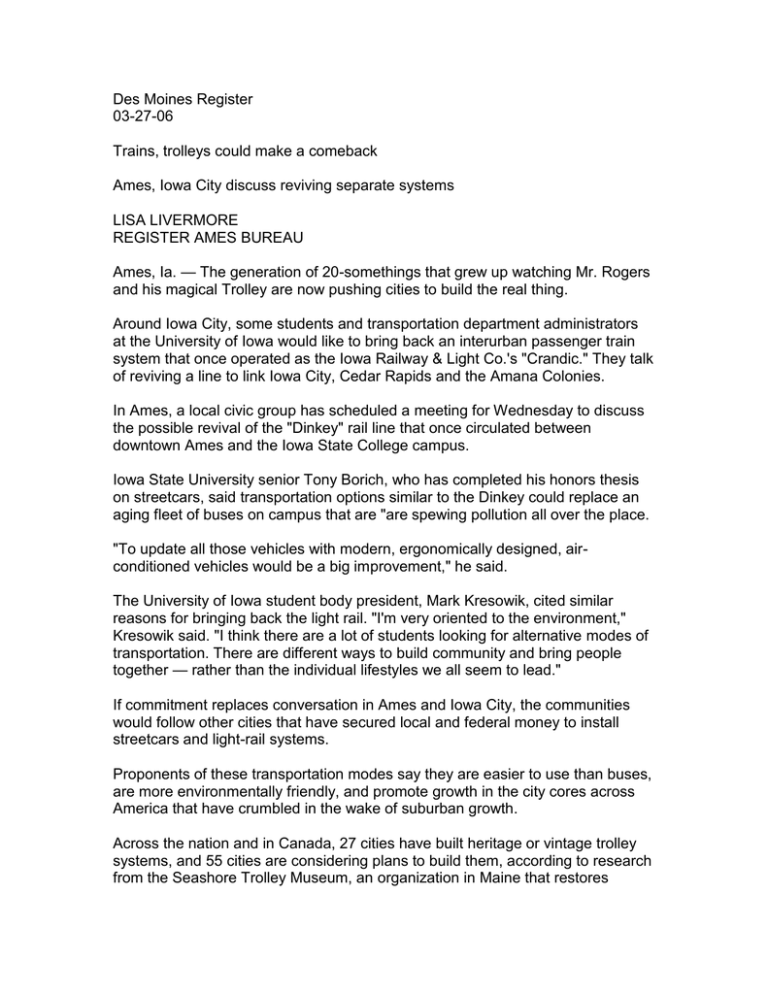
Des Moines Register 03-27-06 Trains, trolleys could make a comeback Ames, Iowa City discuss reviving separate systems LISA LIVERMORE REGISTER AMES BUREAU Ames, Ia. — The generation of 20-somethings that grew up watching Mr. Rogers and his magical Trolley are now pushing cities to build the real thing. Around Iowa City, some students and transportation department administrators at the University of Iowa would like to bring back an interurban passenger train system that once operated as the Iowa Railway & Light Co.'s "Crandic." They talk of reviving a line to link Iowa City, Cedar Rapids and the Amana Colonies. In Ames, a local civic group has scheduled a meeting for Wednesday to discuss the possible revival of the "Dinkey" rail line that once circulated between downtown Ames and the Iowa State College campus. Iowa State University senior Tony Borich, who has completed his honors thesis on streetcars, said transportation options similar to the Dinkey could replace an aging fleet of buses on campus that are "are spewing pollution all over the place. "To update all those vehicles with modern, ergonomically designed, airconditioned vehicles would be a big improvement," he said. The University of Iowa student body president, Mark Kresowik, cited similar reasons for bringing back the light rail. "I'm very oriented to the environment," Kresowik said. "I think there are a lot of students looking for alternative modes of transportation. There are different ways to build community and bring people together — rather than the individual lifestyles we all seem to lead." If commitment replaces conversation in Ames and Iowa City, the communities would follow other cities that have secured local and federal money to install streetcars and light-rail systems. Proponents of these transportation modes say they are easier to use than buses, are more environmentally friendly, and promote growth in the city cores across America that have crumbled in the wake of suburban growth. Across the nation and in Canada, 27 cities have built heritage or vintage trolley systems, and 55 cities are considering plans to build them, according to research from the Seashore Trolley Museum, an organization in Maine that restores trolleys and streetcars. Historians in Ames have said the steam railroad known as "Dinkey" was created in 1891 by a group of residents who wanted to connect the town and campus. In 1907, the steam Dinkey was retired in favor of electric streetcars. Those ran until 1929, when they gave way to automotive transportation. The Crandic railway started running in 1904 as the Cedar Rapids and Iowa City Railway and Light Co. , and it quickly became a magnet for students traveling to athletic events in Iowa City. The service ended in 1953 after years of declining ridership. Members of the student government at ISU have voted to spend $15,000 this year in hopes of hiring a consultant to study the idea of resurrecting the Dinkey. The ISU administration has committed an additional $20,000, and federal sources will provide $240,000, said Bob Bourne, the director of CyRide, the bus system at Ames and ISU. A study to examine the feasibility of this idea would cost around $300,000. The city of Ames has been asked to contribute, but officials haven't voted on the request. In eastern Iowa, nearly a dozen entities, including the U of I, have contributed money to study reintroducing a passenger train system connecting Cedar Rapids, Iowa City and the Amana Colonies, said William Hoekstra , the transportation and parking director in Cedar Rapids. Those cities are already connected by a regional railroad system used to ship goods. "We are way ahead of everybody," Hoekstra said. Jim Schantz of Boston, the board director of the Seashore Trolley Museum, said the resurgence in trolleys, light rails and streetcars is due in part to city leaders who want to jump-start downtown development and the access they have to federal money for these types of projects. He cited Memphis, Tenn., where downtown was "drained out.'' When leaders agreed to put in streetcars, he said, the city's core bloomed with activity. "Once private developers or individuals who consider living downtown see some permanent investment, the next thing you know, old warehouses are converted to condos and businesses move in," he said. That's what advocates want to happen in Ames and eastern Iowa. "We are constantly trying to do more events and find more ways to bring the students, faculty and staff downtown," said Angela Moore , director of the Main Street Cultural District in Ames, an organization that promotes downtown Ames. "The Dinkey might be a great way to bring them downtown because they're consumers like everybody else is." Still, some students in Ames are skeptical about the movement. They say they go to eat and shop where other young people hang out and where they can walk from their homes. Jimmy Oribiana , a junior at Iowa State University, said he thought the CyRide bus system negated the need for transportation resembling the Dinkey. "We're not downtown New York," he said. "It's kind of a far-fetched idea." Miya Marth, 18, of Webster City was recently in Campustown, a commercial district south of ISU, looking for an apartment. As she stood by the latest new high-rise housing targeted to people her age, she explained why, even if new transportation is built, it wouldn't change where she spends her free time. "Where we go in Ames is here," she said. "You walk to everything. Everyone is a student. Everyone knows you are a student."
